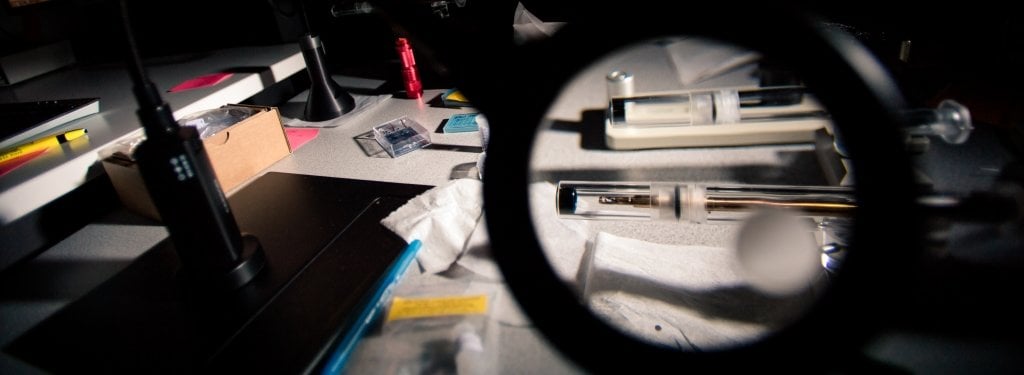There’s a method to my development of new nanomaterials.
". . . we all lose our charms in the end
But square cut or pear shaped these rocks don't lose their shape
Diamonds are a girl's best friend . . ."
Marilyn Monroe may have convinced previous generations that diamonds are a girl’s best friend, but in the future people may not sing the praises of sparkly carbon-based gemstones; they might be singing about new nanomaterials related to graphene and nanotubes. Thanks to a multidisciplinary collaboration using artificial intelligence (AI), physicist Yoke Khin Yap at Michigan Technological University and a team of researchers hope to develop new nanomaterials that are smaller and much stronger than diamonds.
There's A Method To My...
An occasional series in which we dissect how researchers do their work, one methodology at a time. Because everyone can understand science if it’s clearly explained.
About Those Nanotubes…
Nanotubes and graphene are a class of low-dimensional materials that can be composed of carbon or some combination of carbon, boron or nitrogen (B-C-N nanomaterials). The molecular bonds that join the atoms to form these nanomaterials are remarkably strong and they have wide-ranging applications, from water purification to biomedical research, from solar cells to semiconductors for computing and electronics.
DFT, AI, and Other Helpful Acronyms
The work happens at a nanoscale — and Yap’s team needs an atomic window. Thanks to an instrumentation grant from the National Science Foundation (NSF), Michigan Tech purchased a scanning transmission electron microscope (STEM) in 2018. According to Yap, the system “allows us to image nanomaterials at the atomic resolution, and at the same time we can touch them; we can probe them; we can characterize them in situ.”
360-Degree View of the STEM
But getting a material to the microscope is a long road. What if new materials could be invented before they’re seen?
Yap’s work was inspired by Density Functional Theory (DFT) developed in the 1970s. DFT is widely used in both academia and industry to study materials and predict behaviors at an atomic level, including the structure and electronic properties. In the early days of the theory, there were limitations; DFT was not terribly accurate. According to Yap, DFT told experimentalists important information about the properties of a new structure, but offered little insight about how to make those theoretical materials a reality. He adds that DFT predictions are better suited to the nanoscale, involving 100 atoms or fewer. Therefore, predicting new nanomaterials is the sweet spot of DFT.
About the Researcher
But AI makes the process even more interesting and sophisticated.
Computer scientists plug in data from current published research on new materials and then compare that information using a popular type of vector-space modeling called Word Embedding. The researchers are looking for places where keywords, such as carbon nanotubes and graphene, might overlap with properties such as band gap or mobility, said Yap.
“They use a computer to dig into all the theoretical predictions that are being published by physicists and chemists,” Yap said. “This brings together all the kinds of theory out there and we find there is a subset that potentially more people agree upon.”
From there, the researchers take those data-mined results and feed them into a convolutional neural network (CNN), which is a type of machine deep-learning network wherein the computer applies logic to make predictions. By applying layer upon layer of filters, the CNN reveals even more patterns in the data.
Susanta Ghosh is an assistant professor of mechanical engineering at Michigan Tech and works on new materials with Yap. He said, “The biggest challenge in the Materials by Design paradigm is the high-dimensionality of the material design space due to the vast amount of possible combinations or conditions that lead to different materials.”
About the Researcher
In other words, the design process is complicated by a staggeringly high number of dimensions.
“Data-driven modeling integrated with experiments or simulations is showing tremendous promise to overcome this challenge,” Ghosh added. “Data-driven modeling, such as machine learning, is opening new possibilities for creating structure-property relations across diverse material length and time scales and enabling optimization in the microstructural space for material design.”
The process is lengthy — and like DFT it’s limited to identifying what materials are possible. Yap said further research with another layer of DFT modeling on the dynamic of chemical reaction may reinforce the prediction from CNN and offer insights about how to actually fabricate the materials. He anticipates seeing new materials in the next 10 to 15 years.
“It is complicated and it will become a very interdisciplinary collaboration between theorists, computer scientists, experimental physicists and chemists to make the new nanomaterials,” Yap said.
This multidisciplinary approach advances existing knowledge and theory about the next generation of materials for computing, medicine, engineering and more. With AI and atomic imaging, possibilities won’t lose their shape and nanomaterials — not diamonds — are a physicist’s best friend.
Michigan Technological University is an R1 public research university founded in 1885 in Houghton, and is home to nearly 7,500 students from more than 60 countries around the world. Consistently ranked among the best universities in the country for return on investment, Michigan's flagship technological university offers more than 185 undergraduate and graduate degree programs in science and technology, engineering, computing, forestry, business, health professions, humanities, mathematics, social sciences, and the arts. The rural campus is situated just miles from Lake Superior in Michigan's Upper Peninsula, offering year-round opportunities for outdoor adventure.








Comments